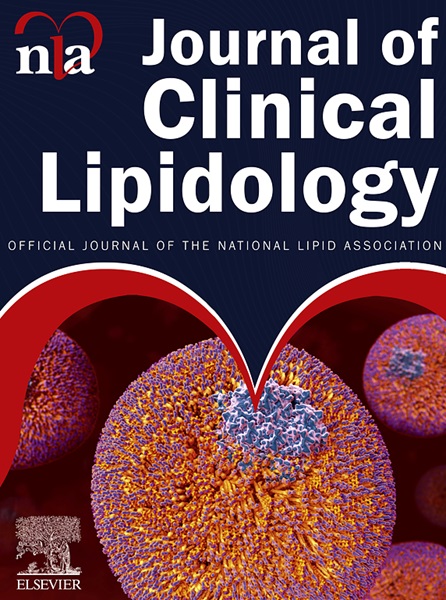Safety and efficacy of moderate-intensity statin plus ezetimibe versus high-intensity statin monotherapy in patients with atherosclerotic cardiovascular disease: A meta-analysis
IF 3.6
3区 医学
Q2 PHARMACOLOGY & PHARMACY
引用次数: 0
Abstract
Atherosclerotic cardiovascular disease (ASCVD), affects approximately 18.6 million individuals worldwide and poses a significant healthcare related challenge. Despite the established efficacy of both high-intensity statin monotherapy (HIS) and moderate-intensity statin plus ezetimibe (MIS+EZT) in ASCVD management, the optimal treatment strategy remains unclear. A thorough literature study was conducted across PubMed, Embase, and the Cochrane databases, focusing on studies that compared the effects of moderate-intensity statins plus ezetimibe with high-intensity statin monotherapy in ASCVD patients. In the 13 included studies, involving 8,592 patients, 4,525 (52.67 %) of which received moderate-intensity statin plus ezetimibe treatment. The follow-up period ranged from 4 to 156 weeks, with participant ages varying LDL-C from 55.2 to 71 years old. Analysis revealed significant MIS+EZT-associated with greater percentages of patients achieved the goal in Low-Density Lipoprotein (LDL-C) < 70 (Odds Ratio (OR) 1.76; 95 % CI [1.26; 2.45]; = 0.001; I² = 73 %), LDL-C reduction (Mean Difference (MD) -5.05 mg/dL; 95 % CI [-9.02;-1.07]; < 0.013; I² = 56 %;); Total Cholesterol reduction (MD -7.91 mg/ dL; 95 % CI [-14.90; -0.91]; < 0.027; I² = 60 %); Triglycerides reduction (MD -8.20 mg/ dL; 95 % CI [-13.05; -3.35]; < 0.001; I² = 2 %;); There was no statistical difference between groups in Drug Adverse reaction (Risk Ratio (RR) 1.19; 95 % CI [0.79; 1.78]; = 0.404; I² = 0 %); and Drug intolerance (RR 0.78; 95 % CI [0.32; 1.92]; = 0.584; I² = 35 %). This meta-analysis highlights the effectiveness of MIS+EZT in improving significant lipid profile components for ASCVD patients, as can been seen through the greater percentage of patients achieving the LDL-C < 70 mg/dL target and lower LDL-C, total cholesterol and triglycerides levels. Importantly, there were no significant differences in the occurrence of overall adverse events and adverse drug reactions between the two groups.动脉粥样硬化性心血管疾病患者接受中等强度他汀加依折麦布与高强度他汀单药治疗的安全性和有效性对比:荟萃分析
动脉粥样硬化性心血管疾病(ASCVD)影响着全球约 1860 万人,是医疗保健方面的一大挑战。尽管高强度他汀单药疗法(HIS)和中等强度他汀加依折麦布疗法(MIS+EZT)在治疗动脉粥样硬化性心血管疾病方面的疗效已得到证实,但最佳治疗策略仍不明确。我们在 PubMed、Embase 和 Cochrane 数据库中进行了一项全面的文献研究,重点是比较中等强度他汀类药物加依折麦布与高强度他汀类药物单药治疗 ASCVD 患者的效果的研究。纳入的13项研究共涉及8592名患者,其中4525人(52.67%)接受了中等强度他汀类药物加依折麦布治疗。随访时间从 4 周到 156 周不等,参与者的 LDL-C 年龄从 55.2 岁到 71 岁不等。分析显示,低密度脂蛋白(LDL-C)小于 70 的患者达到目标的百分比与 MIS+EZT 显著相关(Odds Ratio (OR) 1.76; 95 % CI [1.26; 2.45]; = 0.001; I² = 73 %),降低低密度脂蛋白胆固醇(平均差(MD)-5.05 mg/dL; 95 % CI [-9.02;-1.07]; < 0.013; I² = 56 %;);降低总胆固醇(MD -7.91 mg/ dL; 95 % CI [-14.90; -0.91]; < 0.027; I² = 60 %);甘油三酯降低(MD -8.20 mg/ dL; 95 % CI [-13.05; -3.35]; < 0.001; I² = 2 %;);药物不良反应组间无统计学差异(风险比(RR)1.19; 95 % CI [0.79; 1.78]; = 0.404; I² = 0 %);药物不耐受(RR 0.78; 95 % CI [0.32; 1.92]; = 0.584; I² = 35 %)。这项荟萃分析强调了 MIS+EZT 在改善 ASCVD 患者重要血脂组合方面的有效性,更多患者实现了 LDL-C < 70 mg/dL 的目标,降低了 LDL-C、总胆固醇和甘油三酯水平。重要的是,两组患者的总体不良事件和药物不良反应发生率没有明显差异。
本文章由计算机程序翻译,如有差异,请以英文原文为准。
求助全文
约1分钟内获得全文
求助全文
来源期刊
CiteScore
7.00
自引率
6.80%
发文量
209
审稿时长
49 days
期刊介绍:
Because the scope of clinical lipidology is broad, the topics addressed by the Journal are equally diverse. Typical articles explore lipidology as it is practiced in the treatment setting, recent developments in pharmacological research, reports of treatment and trials, case studies, the impact of lifestyle modification, and similar academic material of interest to the practitioner.
Sections of Journal of clinical lipidology will address pioneering studies and the clinicians who conduct them, case studies, ethical standards and conduct, professional guidance such as ATP and NCEP, editorial commentary, letters from readers, National Lipid Association (NLA) news and upcoming event information, as well as abstracts from the NLA annual scientific sessions and the scientific forums held by its chapters, when appropriate.

 求助内容:
求助内容: 应助结果提醒方式:
应助结果提醒方式:


